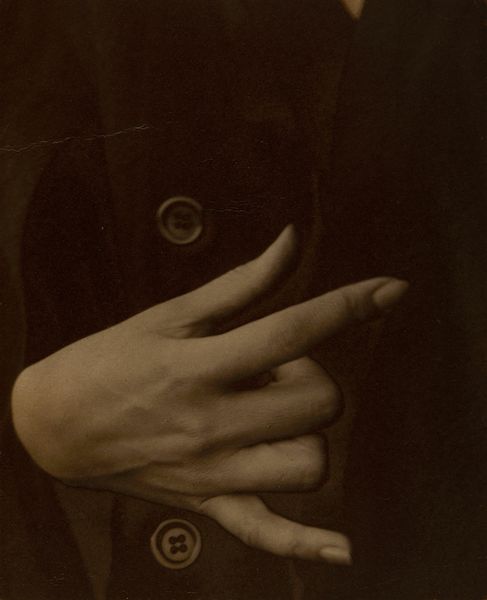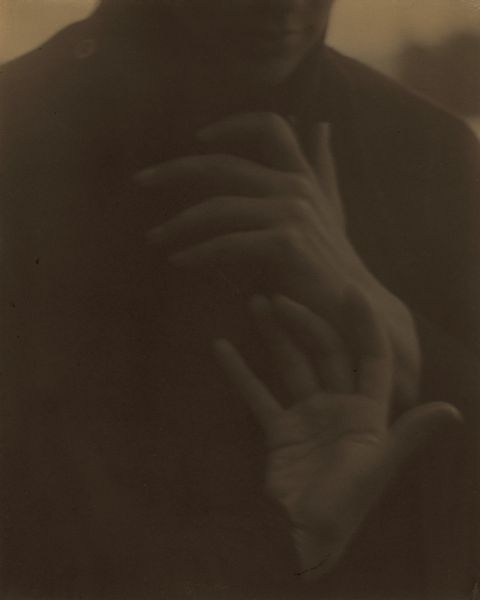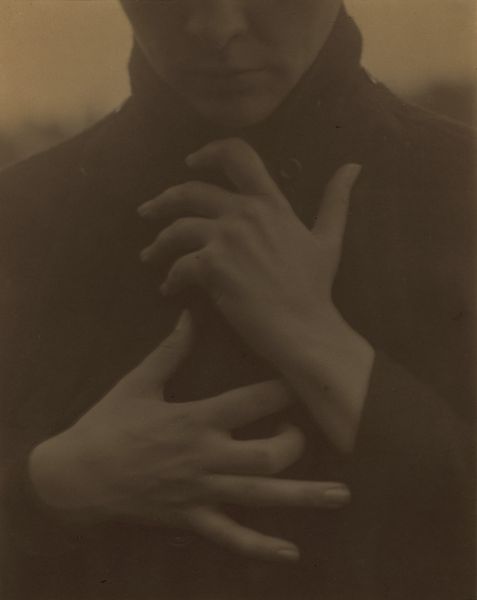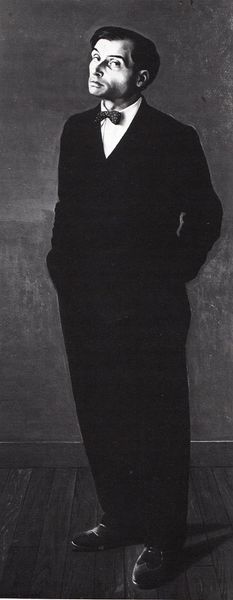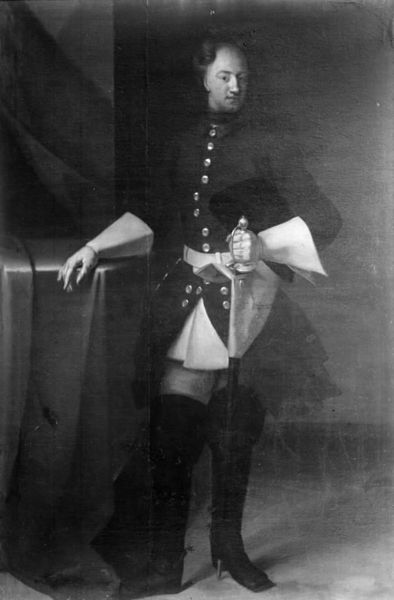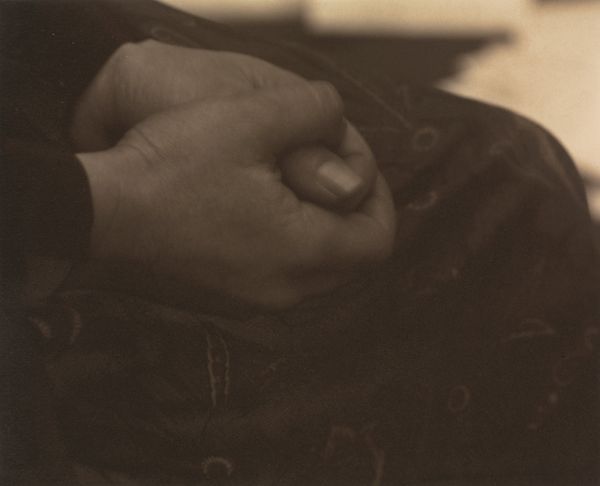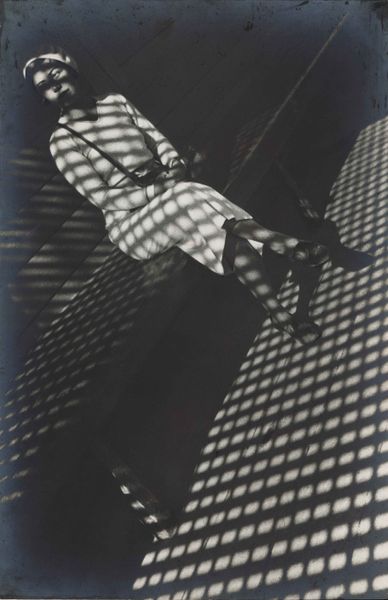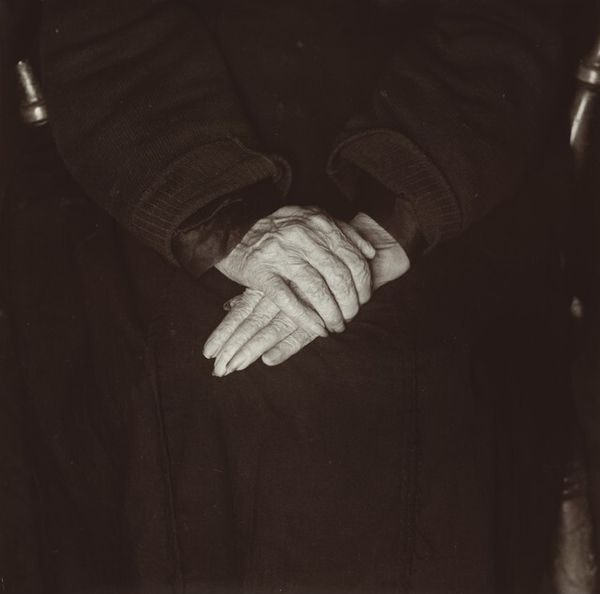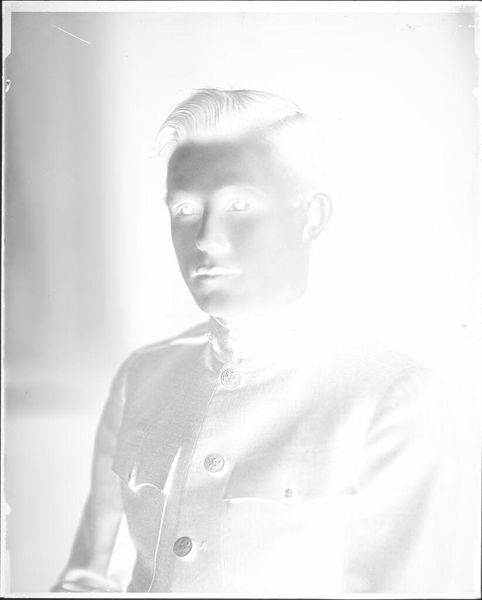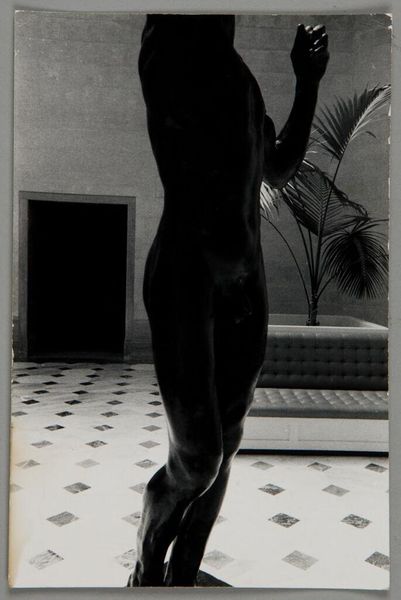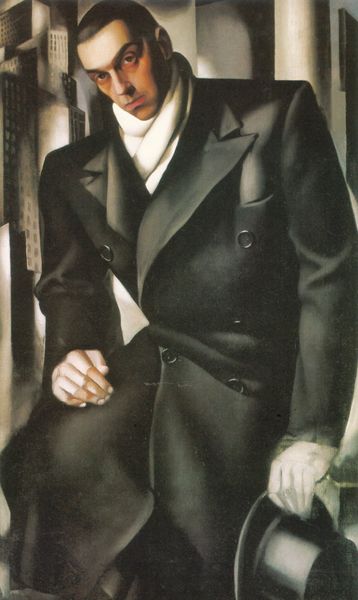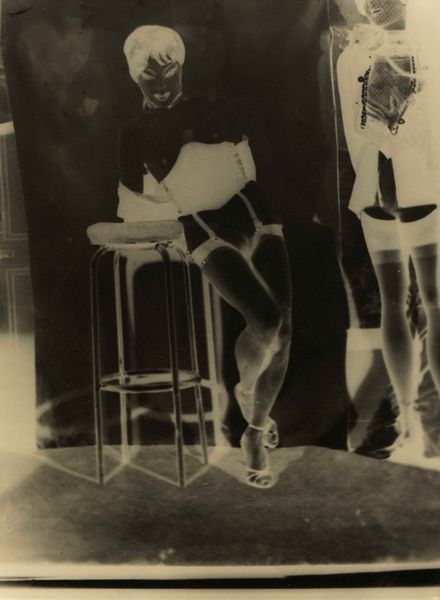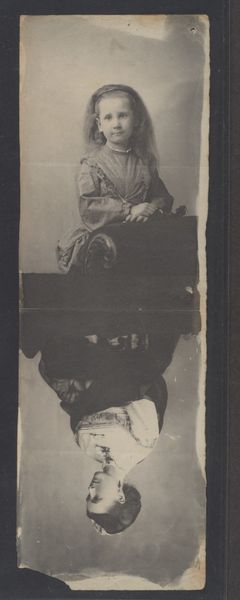
photography, gelatin-silver-print
#
portrait
#
black and white photography
#
black and white format
#
photography
#
historical photography
#
black and white
#
gelatin-silver-print
#
monochrome photography
#
modernism
Dimensions: sheet (trimmed to image): 10.8 × 7.7 cm (4 1/4 × 3 1/16 in.) mount: 28.55 × 22.2 cm (11 1/4 × 8 3/4 in.)
Copyright: National Gallery of Art: CC0 1.0
Editor: This is Alfred Stieglitz's "Dorothy Norman," a gelatin-silver print from around 1931. The monochrome palette gives it such a stark, almost graphic quality. What do you see in it? Curator: Indeed. Primarily, I see a fascinating interplay of forms and tones. Note the geometric simplification: the rounded head mirroring the buttons, the collar a crisp frame against the dark fabric. The negative space around the figure is crucial, defining its contour. Observe how the light falls, creating subtle gradations on the otherwise uniform black of the dress. The varying light emphasises its materiality. Editor: The buttons really draw the eye. Does their placement suggest anything about the figure's pose? Curator: Precisely. Their verticality underscores the line of the spine, leading our gaze downwards. This formal device evokes a sense of melancholy or introspection, wouldn't you agree? The turn of the head away from us contributes, naturally. What else stands out to you? Editor: It's the cropping, I think. Cutting off the face gives it such an anonymous feel. Like we are more aware of surface. Curator: A significant point. The photographic crop flattens the picture plane and redirects the gaze onto material elements, enhancing their formal significance. It forces one to contemplate not just representation but the very structure of the image itself. Editor: It is amazing how much the composition changes the mood, from portrait to… something else entirely. Curator: Agreed, the formal elements carry tremendous meaning.
Comments
No comments
Be the first to comment and join the conversation on the ultimate creative platform.
